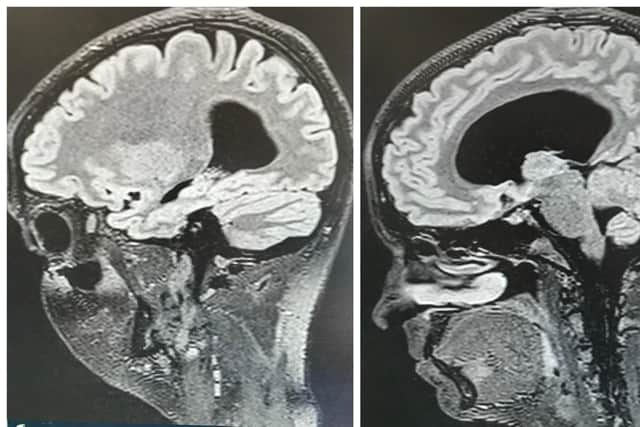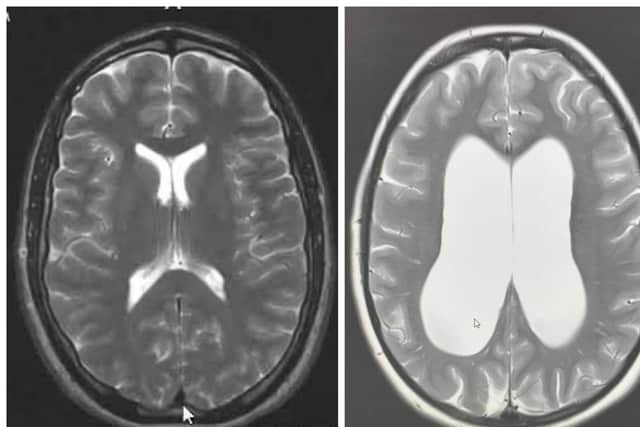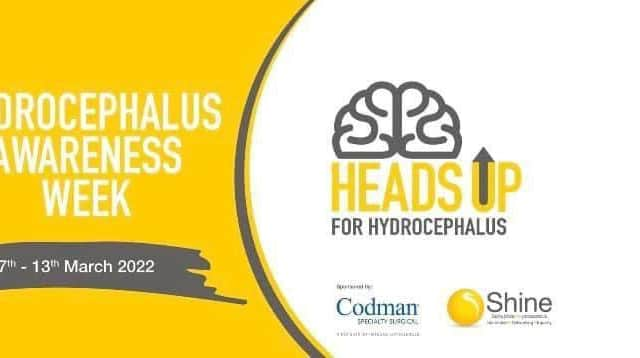Hydrocephalus Awareness Week sees Thornton Cleveleys woman bravely tell her brain diagnosis journey in a bid to highlight condition for others
and live on Freeview channel 276
Before the start of this week the word hydrocephalus was an alien one to me, but by the end, one in which I wanted to lift the darkness from.
However, one person this word has a lot of meaning to is 34-year-old Emma Robinson from Thornton Cleveleys, who was diagnosed with it last year.
Advertisement
Hide AdAdvertisement
Hide AdThe previous Business Studies and and Finance Teacher has bravely decided to tell her story to raise awareness of the condition in the hope of helping others to spot the warning signs.


Hydrocephalus is a build up of fluid on the brain which can have a range of physical and cognitive effects.
It can be associated with learning difficulties affecting concentration, reasoning, short-term memory, co-ordination, motivation, organisational skills and language. Physical effects may include visual problems, or early puberty in children.
It can usually be treated using a thin tube (shunt) that's surgically implanted in the brain and drains away the excess fluid.
Advertisement
Hide AdAdvertisement
Hide AdThe damage to the brain from hydrocephalus can cause a wide range of symptoms, including a headache, being sick, blurred vision and difficulty walking.


There are three main types of hydrocephalus:
Congenital hydrocephalus – that's present at birth.
Acquired hydrocephalus – develops after birth.
Normal pressure hydrocephalus – usually only develops in older people.


Emma, who was diagnosed with the condition last year said: "Last June I had an MRI scan on my jaw and an incidental finding was picked up.
"I was called and asked to attend a further MRI two days later with contrast as more images and sequences were needed. All I could think of was why?
"I got a call saying I’d been urgently referred over to Preston Neurology department due to having excess fluid on and around my brain.
Advertisement
Hide AdAdvertisement
Hide Ad"The form I have is chronic arrested idiopathic (normal pressure) hydrocephalus."


She added: "It does worry me as it’s something I never knew I had but I know to be mindful of what I’m doing and not put myself in any way of risk, nor ignore any warning signs."
"It’s now managed by having six monthly check ups with my neurology consultant at Preston Hospital who is incredible - Mrs Donaldson Hugh as is her secretary Amanda.
"I also have six month eye tests to check the pressure behind them."
Advertisement
Hide AdAdvertisement
Hide AdAdopting the fight not flight mode of thought Emma, who is married to Ryan and has a five-year-old son Theo, has helped raise over £250,000 for her friend Louisa Grundy whose six-year-old daughter Isabelle (one of Theo's good friends) can receive potentially life-saving treatment in the USA for a rare type of cancer.
If left untreated, hydrocephalus can be fatal.
Many of these effects can be reduced through teaching strategies or with treatment where relevant. The effects of hydrocephalus can vary greatly from one individual to another and some people will have very few, if any, problems.
Hydrocephalus can be congenital (you are born with it) or acquired (occurring at any point in your lifetime).
It is usually treated by diverting the cerebro spinal fluid (CSF) to a place in the body where it can be absorbed.
Advertisement
Hide AdAdvertisement
Hide AdAsking people to exercise kindness to one another Emma added: "Just remember to be kind and mindful of what others are going through. Not all illnesses are visible and some are for life."
For more information on hydrocephalus visit the NHS website.
Comment Guidelines
National World encourages reader discussion on our stories. User feedback, insights and back-and-forth exchanges add a rich layer of context to reporting. Please review our Community Guidelines before commenting.